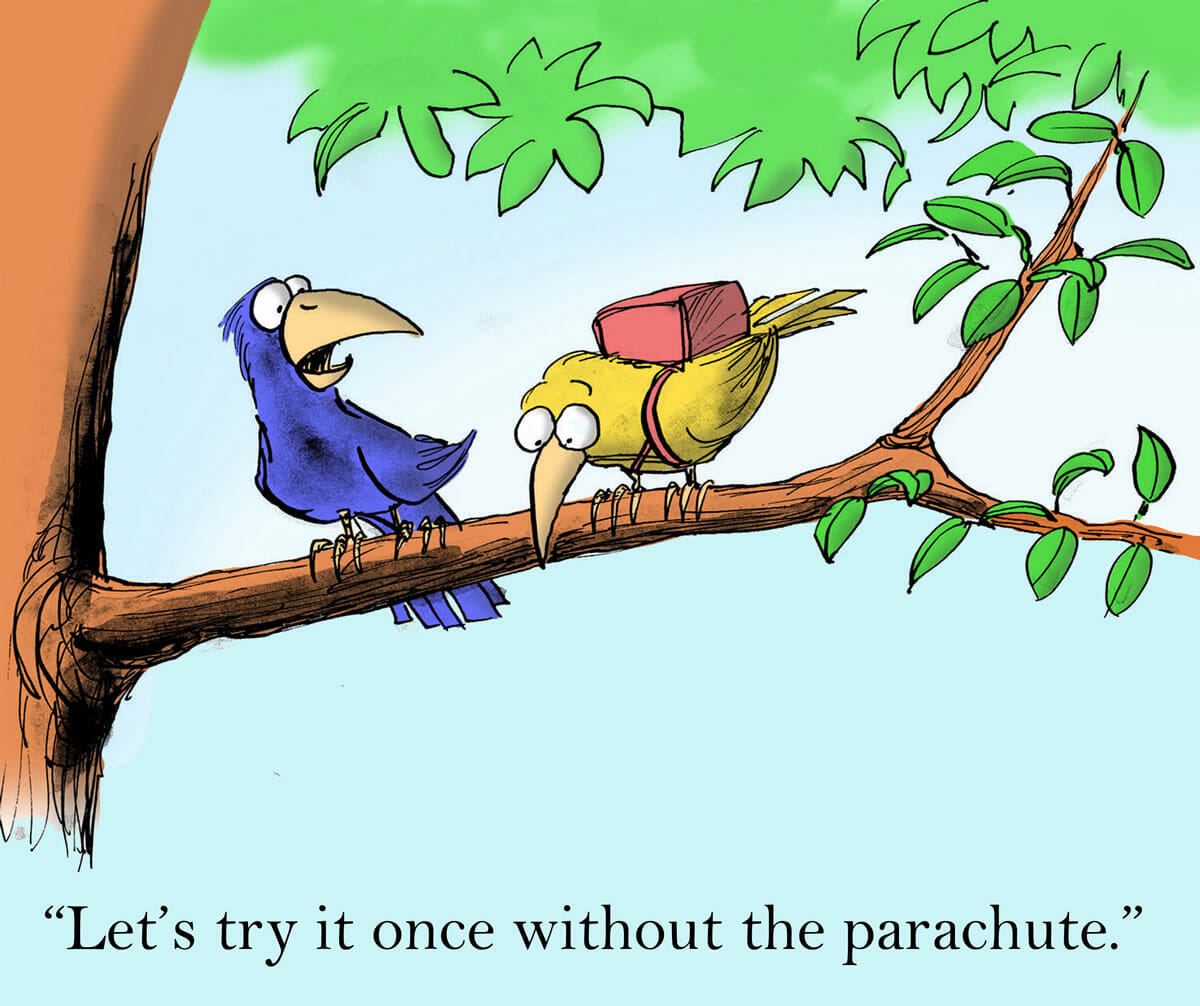
How to help your people succeed by first helping them fail
Help your people become great, later, by helping them to be dreadful, first.
Under pressure to deliver an ROI from your training program? Then plan to have your participants be terrible when you they leave your class—at first.
ROI is driving bad program design.
The need to deliver results is compelling high performing executives to get wickedly focused on demonstrating the ROI of training efforts. Every CHRO or CLO wants to be able to demonstrate that the benefit they delivered was greater than the money they spent. In the realm of innovation training, this is triggering a rash of short-sighted and harmful impulses. Specifically, program managers are trading long term results for short term vanity metrics. You might not even be able to recognize that you’re doing this until it’s too late and, eventually, your program is cut. It doesn’t have to be this way. With this in mind, here are some suggestions for bucking bad common practices, and improving the impact of your efforts over time.
Step 1: Business metrics, not vanity metrics
Innovation is about solving problems in new ways under conditions of uncertainty. Start by identifying the problem your innovation effort is intended to solve, or more specifically, the meaningful and credible business outcomes you want to deliver. Make sure the leadership team sponsoring the effort is clear about this. And watch out for short-term vanity metrics. They are as addictive as chocolate frosting, and equally as unhealthy.
These metrics can be anything from the number of new ideas generated immediately at the program (Wow!) to the projects immediately presented to a “Shark Tank” of leaders (Cool!) to the projects funded or celebrated per-program (Hurrah! New iPads for the winning team!). If these are the outcomes you want, you don’t need training; you need a “Thon.” Not because I say so, but because there is an inverse relationship between the number of vanity targets for a training program and the long term benefits of said training program. Hack-a-thons are amusing, just don’t confuse them for deep training.
On the other hand, if your goal is to create sustainable habits and capabilities that lead to more innovation over time, swap short term vanity measures with longer term business measures, such as S.M.A.R.T revenue goals, cost reduction goals, or supply chain acceleration goals. And that’s just for starters. From there, it becomes easier to pinpoint the new skills you’ll need to have your people learn, practice, and master.
Step 2: Prepare your participants to practice and fail. A lot.
It’s fashionable to finish training programs by instructing participants to commit to actions which, we hope, will generate big ROIs that we can later attribute to our brilliant program designs. The principle conceit here is that that our programs are so amazing that the participants will be able to successfully “Do” whatever it is we have taught them, upon arrival back at the job, immediately. Just like that.
Really?
No, not really, as it turns out. When it comes to innovation (and most new skills), what matters is practice. A lot of it. “Nothing is more powerful than practice for helping you learn,” notes neuroscientist Dr. Lara Boyd, “and the bottom line is, you have to do the work .”
So why not help them to do the work? Rather than prepare a participant to do something, prepare them to practice something. Repeatedly. And to be ready for failure, at least at first. Because if the skills are truly new, some failure is inevitable.
How do you prepare them for this? Two steps: First, teach practice methods for the new skills in addition to the skills themselves. Second, share frameworks for reflection that help leaders convert the near-misses and near-successes into insights and learning. Remember—the primary driver of change in your brain is your behavior. Those who practice will improve; those who don’t, won’t.
Step 3: Practice, huddle, practice, huddle
After your participants have figured out which skills to practice and which practice methods to use, it’s time for you to support their early swings at bat. Coaching and peer group huddles can be particularly useful here. One Fortune 50 firm has participants in their executive leadership program spend several months executing 90-day “practice and experimentation plans,” punctuated by peer group after-action review “huddles” every few weeks.
Worried that your executives will complain that practicing takes too much time? Don’t. If they’ve agreed to the business results you want to accomplish and the benchmarks you will use to measure success, then you will be pleasantly surprised by how quickly your bosses will support the practice. If they don’t, then you might be in a firm that isn’t going to thrive for long – so consider going to a place where people are encouraged to master the skills needed to perform and transform, rather just merely “learn” them.
Enjoy your success
One of the biggest problems facing leaders today is a misunderstanding of the role of “training” programs in leadership development. Such programs are often treated as turn-key solutions to closing skill gaps, but rarely can a program provide mastery of any skill in just one sitting.
A program can, however, provide the pivotal insights, inspiration, and practice methods to launch leaders on a journey to effectively practice and master a skill over time. Doing this requires programs that are designed to both provide practice methods for the new skills and help participants become great at those skills later, by allowing them the benefit and learnings from being not great at them, first.
This article originally appeared on BTS.com:
Help your people become great, later, by helping them to be dreadful, first.
 BTS, an Advantage Performance Group thought leader partner, is a global professional services firm headquartered in Stockholm, Sweden, with some 500 professionals in 33 offices located on six continents. We focus on the people side of strategy working with leaders at all levels to help them make better decisions, convert those decisions to actions and deliver results.
BTS, an Advantage Performance Group thought leader partner, is a global professional services firm headquartered in Stockholm, Sweden, with some 500 professionals in 33 offices located on six continents. We focus on the people side of strategy working with leaders at all levels to help them make better decisions, convert those decisions to actions and deliver results.
- The robots are coming! Are you ready? - July 26, 2018
- It’s not what you think: Technology’s impact on the future of work - August 22, 2017
- How to help your people succeed by first helping them fail - August 8, 2017

